I first learned the term “ecotourism” in college when preparing for an anthropology-focused study-abroad trip to Ecuador. The concept comprises aspects of responsible travel that protect local ecosystems, support local economies, and foster cross-cultural learning. Prior to that trip, my travels outside the continental US had only been with my high school band and orchestra, which by design were highly planned to minimize surprises when trying to manage hundreds of teenagers at once.
My trip to Ecuador in college was understandably different, especially since some of the villages where we stayed in the Amazon were inaccessible by bus and required several hours of hiking and canoeing just to get there. Although our destinations were off the standard tourist path, it was painfully obvious that these villages were working with an ecotourism management company and had their own well-polished routines of tours and activities for their guests. For example, one evening after dinner, our hosts put on a program for us that included singing and dancing… before they asked us to sing and dance for them.
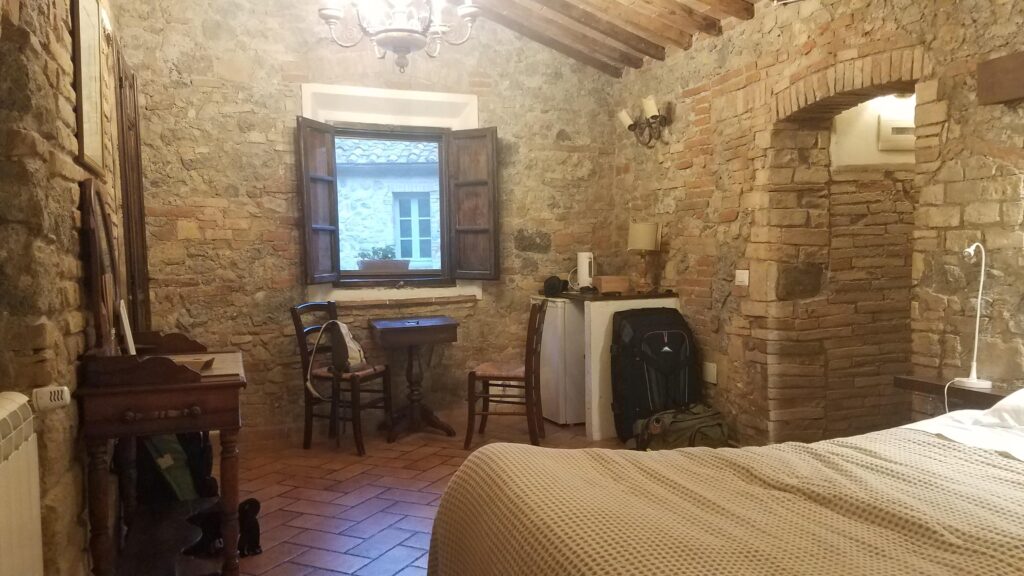
The fact that we were not the first Americans they had ever seen do “The Electric Slide” didn’t bother me. In fact, I was intrigued by the idea that we were not the first Americans who paid money to hike for hours to get there (gaining blisters and fire ant bites in the process), to help villagers with physical labor, such as clearing brush with dull machetes (gaining blisters in the process), and to experience the biting insects, venomous snakes, very large spiders, and lack of electricity and running water in open-air sleeping quarters that were marginally nicer than the villagers’ homes. I was intrigued by the idea that people paid money for these experiences, and that that was a source of revenue for the community.
Italian Agrotourism
Ever since that trip, I have been passionate about travel, and my wanderlust has been stoked by the desire to meet people where they are and expand my perspective through seeing what life is like for them, not simply working my way through a checklist of must-see tourist stops. I was incredibly fortunate to have that experience in Japan (where tourists are usually herded through on a standard itinerary of shrines and temples) when I lived in the mountains of Fukushima for two years. But unless you actually live in the country you want to explore (or you have friends or family who do and can show you around), there are few better ways to get that closer-to-authentic experience than through ecotourism.
When Christian and I went to Italy last fall, it was going to be the first time we had ever traveled anywhere that was new to both of us. We had a little French and Spanish between the two of us, but no more than three months of Italian on Duolingo. I had been to Europe before, but every country in the EU is different, and I wasn’t going to walk in assuming that I would be understood by repeating English phrases slowly and loudly. Not knowing anyone on the ground (even my friend who lives in Rome happened to be visiting his family in Pennsylvania at the time), we were only going to get as far off the beaten path as we made ourselves go. Fortunately, I got a frequent travel recommendation from several friends who had gone in recent years: “agriturismo.”
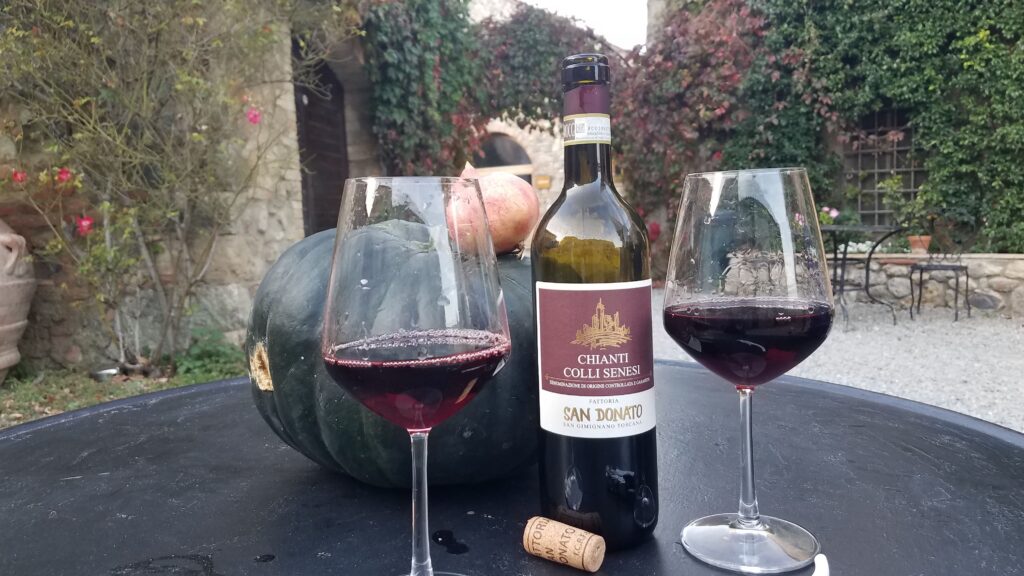
“Agritourism” (or agriturismo in Italian) is a subset of ecotourism that focuses specifically on agriculture, and Tuscany is one of the top places in the world for this type of tourism. The trend of converting farmhouses into vacation spots started in the mid-20th century when the agriculture industry was faltering, and it was so successful that there are now an estimated 20,000 agriturismo locations across Italy.[1] In 2021, Tuscan farms welcomed approximately 870,000 of the country’s 3 million agro-tourists,[2] demonstrating that agriturismo (along with agriculture itself) is one of the top drivers of post-COVID economic recovery in Italy.[3]
Under the Tuscan Sun
The middle point of our trip – the stop that excited me the most when we were planning the journey – was a three-night stay on an organic farm in Tuscany located in between the medieval town of San Gimignano [4] and the medieval ruins of Castelvecchio.[5] The vast majority of agriturismi (plural) are now diversifying their revenue between farming, lodging, retail sales of their products to guests, and experiences, such as wine tastings, cooking classes, or truffle hunting. As any business owner will tell you, diversification of revenue streams is a good way to protect the business, and the farm where we stayed (which produced both wine and olive oil) was a great example.[6]
Aside from being located near landmarks I wanted to see, the farm was on a list of the best agriturismi in the area,[7] meaning we could expect to encounter other tourists. Our criteria for picking restaurants when we travel is to find a place with no English on the menu and no tourists at the tables. It’s a little harder to do that with hotel stays, given the role of hotels, but what surprised us most about many of the places we visited was that while we did see tourists, very few of them were American. The farm was no exception: there was one American couple and one couple that was half American, but the others were from the UK, Germany, Hungary, Switzerland, and Israel. While I had been looking forward to exchanges steeped in Italian culture, it was also exciting to break bread with a melting pot of people who shared a common interest in Italian food and wine.
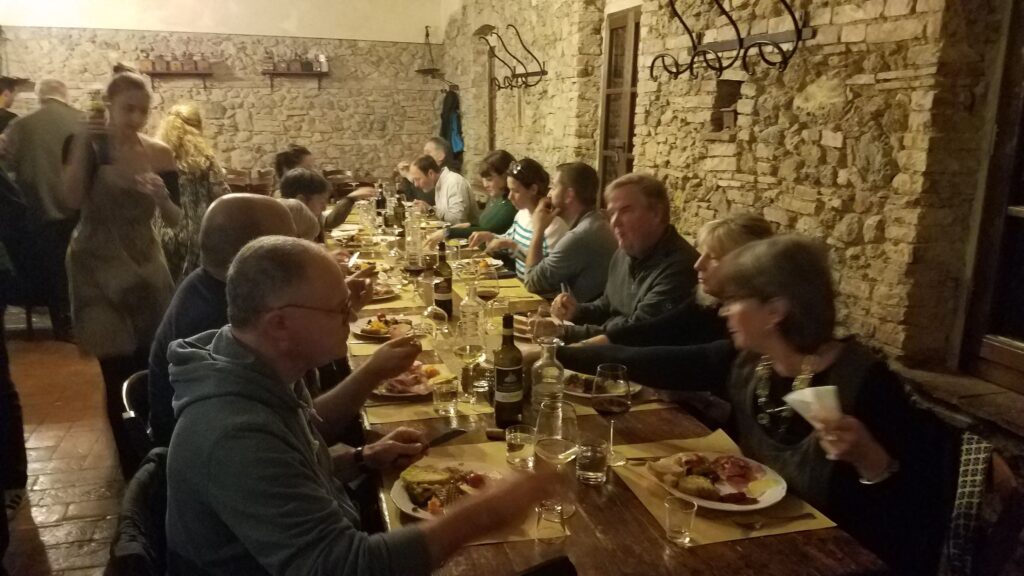
And it was on our last night at the farm, after I had spent a day solo hiking out to the ruins at Castelvecchio (during which I may or may not have lost the trail and almost fallen off the side of the mountain trying to get a good picture), I made excellent use of my ravenous hunger at our pasta making class, which was led by none other than the matriarch of the family. She walked us through tagliatelle and ravioli (made with the dough recipe below), as well as pici (a regional pasta made just with flour, water, and salt) and gnudi (balls of leftover filling from the ravioli – for when you run out of dough). Once we were done preparing the pasta, her team took over in the kitchen to cook it, and we all sat down for dinner (and plenty of wine) together.
Recipe: Fresh Tagliatelle
I’ve made a lot of bread and baked goods over the years, and I consider myself to be decent (or at least most comfortable) in that area. Nevertheless, on the small number of occasions I had made pasta, which also deals with the handling of dough, I had never been satisfied with the result. It was during this class, taught by an Italian mother, that I finally found out some of what I was doing wrong: my first problem was the flour, and my second problem was the kneading. Now that I know better, I am sure that I’ll be able to do better, and that I’ll have fond memories of our time in Tuscany whenever I set aside the time to make this dish from scratch.
To be clear, there is no way I will be making fresh pasta for myself on a weeknight, but after going through the process with Christian, we did agree that it would make for a nice activity that we could do together once we got home (which may finally happen in the coming weeks for our anniversary or Valentine’s Day). This recipe from an Italian website was the closest I could find to what we did at the farm,[8] though the process will be slightly different in every home. The real trick is to do it enough that you get used to working with the dough and figuring out what it needs. Quantities will be slightly different depending on the weather, the humidity in the room, and even the temperature of your hands – a frustrating fact for my “recipes are a science” brain.
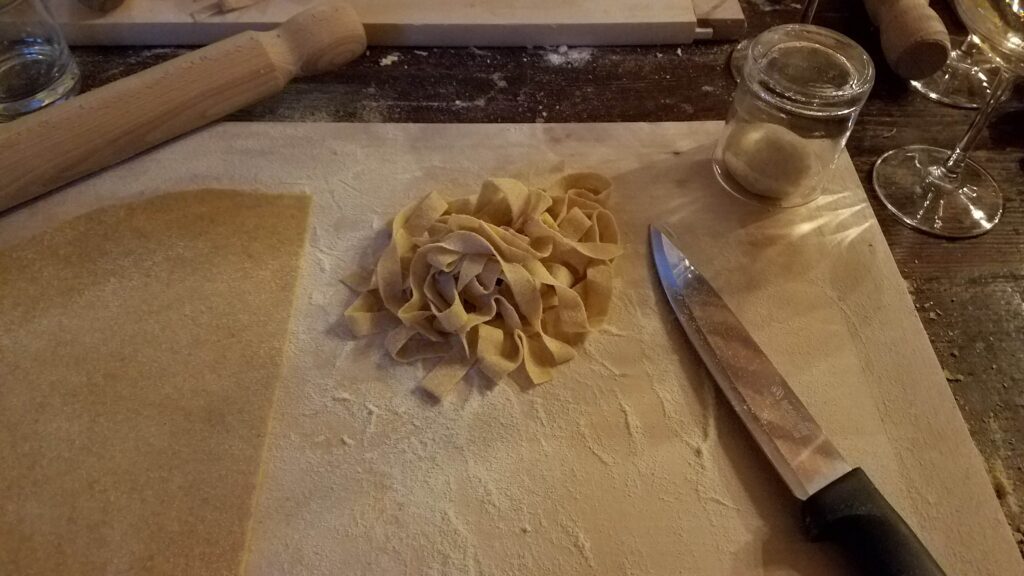
Ingredients (one serving – multiply as needed):
- About 100g “00” flour – more on what that is here [9]
(00 flour will make for a firmer dough, but all-purpose flour will do the trick if that’s what you have) - 1 egg
- A pinch of salt
- A glass of water
- A few spoonfuls of durum wheat semolina (coarse ground)
Create a mound of the 00 flour in the middle of a kneading surface and make a well in the middle. Add the pinch of salt and crack the egg into the well. Whisk the egg with a fork until the flour is incorporated. Once it is too thick for the fork, begin to knead it with your hands, adding water sparingly if it’s too dry. Kneading will probably take longer than you expect it to – 5-10 minutes is a good ballpark, but you should focus on the consistency, rather than the time: you will feel it change to a smooth, springy texture when it’s ready. If you knead bread dough too much, it will get tough, but that’s exactly what you want with pasta dough – you can’t knead it too much. When it’s ready, it should be firm to the touch and spring back when poked. Cover and let it rest for at least 30 minutes.
If you made a lot of dough, divide it and work with sections at a time. Flour the work surface and roll the dough until it is extremely thin (1-2mm), continuing to dust with flour as needed. Lightly fold the sheet of dough over on itself several times until it becomes a tube and cut pieces that are about 1cm in width. Pick up the pieces of pasta and lightly shake them so they unravel. Place them on a pan coated with semolina and dust them generously so the pieces don’t stick together – you can gently form them into little nests, which are easier to work with. Let them dry for 30 minutes to 3 hours before dropping into salted, boiling water. They’re done when they float, so keep an eye on them and test the bite as they cook.
(Psst – you can freeze fresh pasta for up to a month until you’re ready to use it. In that case, boil right from frozen – do not thaw it first.)
Tips we learned from our newest Italian mama while enjoying the fruits of our labor include:
- If you’re making your own, use 00 flour if you can get it, and the flour should not be older than 6 months;
- If you’re buying dried pasta, it should be made with durum wheat, in Italy, and cut with bronze dies (bronze-cut pasta has a very rough texture, which allows it to hold more sauce);
- Cook pasta for two minutes shorter than the package instructions, then strain and add it to the pan where you’re cooking the sauce; add some of the starchy pasta water to help the sauce cling to the noodles as it cooks down;
- People often do not use the right amount of water or salt to cook the pasta: use about 1 gallon of water and 1 tablespoon of salt for every pound of pasta.
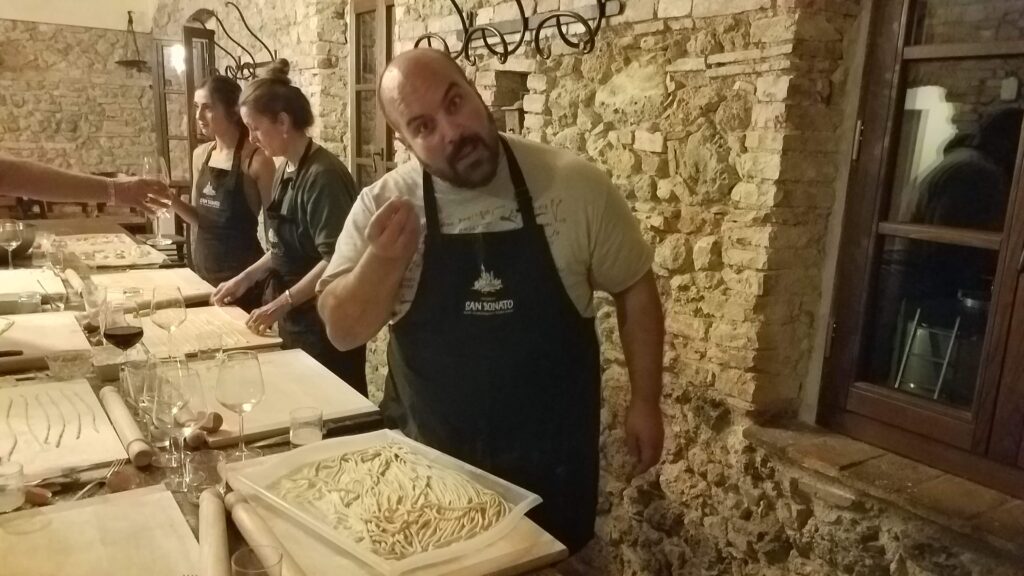
Have you had an ecotourism experience, in Italy or elsewhere? Do you have any good pasta-making tricks? I’d love to hear about it below.
Thanks for reading!
[1] https://www.treehugger.com/top-agritourism-destinations-in-the-world-4869255
[2] https://www.statista.com/statistics/1048114/tourist-arrivals-in-agritourism-italy-by-region/
[4] https://www.sangimignano.com/en/
[7] https://www.travelmag.com/articles/agriturismo-san-gimignano/
[8] https://www.tavolartegusto.it/ricetta/tagliatelle/
[9] https://www.thekitchn.com/what-is-00-flour-pizza-pasta-108281
0 Comments